Text




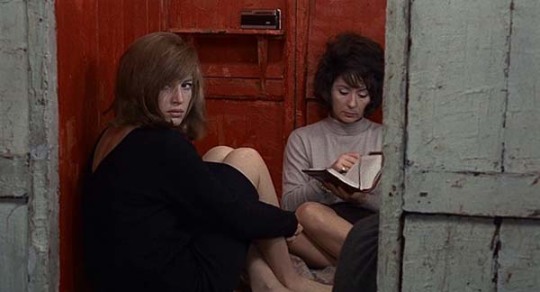


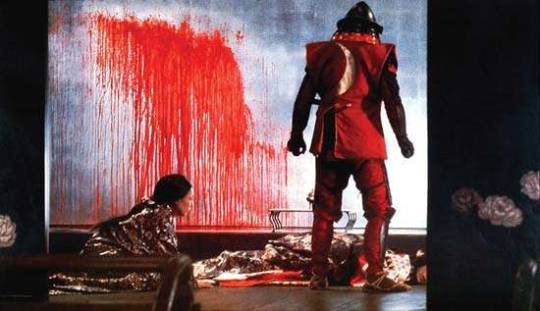
Shades of Red
#three colours: red#krzysztof kieslowski#fire walk with me#twin peaks#david lynch#rosetta#dardenne brothers#red desert#michelangelo antonioni#paris texas#wim wenders#cries and whispers#ingmar bergman#color of pomegranates#sergei parajanov#ran#akira kurosawa#red
36 notes
·
View notes
Text




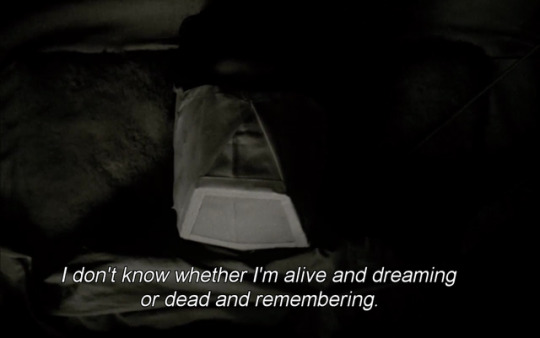
Loneliness
#andrei tarkovsky#krzysztof kieslowski#aki kaurismäki#eric rohmer#dalton trumbo#zerkalo#dekalog#the match factory girl#the green ray#johnny got his gun#loneliness
43 notes
·
View notes
Text
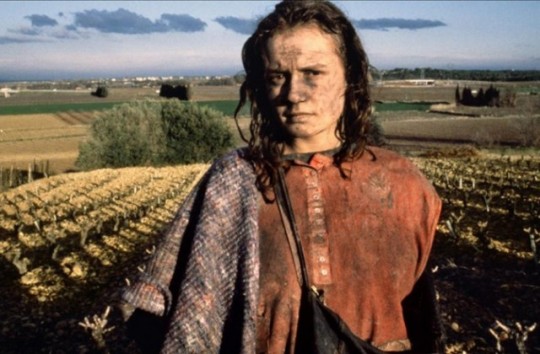
Matt. 27:28, "They stripped Him and put a scarlet robe on Him."
Going beyond the level of denotation, what I see here is Mona as Christ. Both her and Him share the same clothing, colours, unkempt appearance and, ultimately, fate. Likewise, even the setting is strikingly similar. However, here is the enigma that emerges for me: why did Varda choose to portray her in front of a vineyard and not, for instance, a wild forest? Wine and Jesus seems like a simplistic, inadequate symbolism, one that a director of lesser importance would have utilized. What I see in that vineyard is a reference to organized culture, with its strict rules and orientation to productivity. And I would expect Mona to be portrayed in front of a different landscape (even if, as one might argue, she has her back turned to it). And then I look at Mona Lisa. And I notice the contrast in the subjects and the settings. It is now that I can comprehend and marvel at Varda's choice. A mirror image, a doppelganger to the wealthy wife of the silk merchant has come to life.

#vagabond#sans toi ni loi#agnes varda#sandrine bonnaire#mona lisa#leonardo da vinci#jesus#doppelganger#semiotics
8 notes
·
View notes
Text
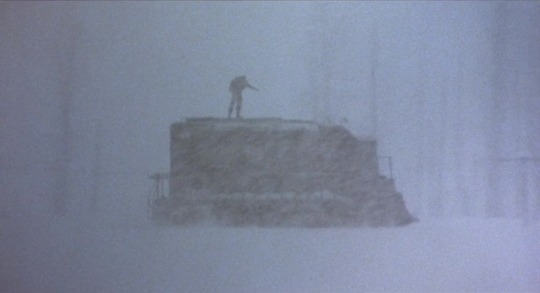

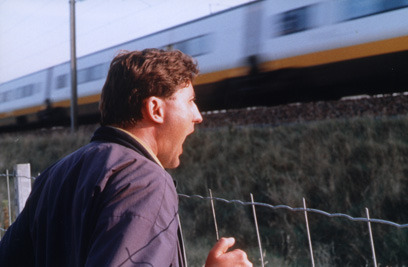
The Train as a Metaphor
#andrei konchalovsky#dalton trumbo#bruno dumont#runaway train#johnny got his gun#humanité#train#metaphor
4 notes
·
View notes
Text

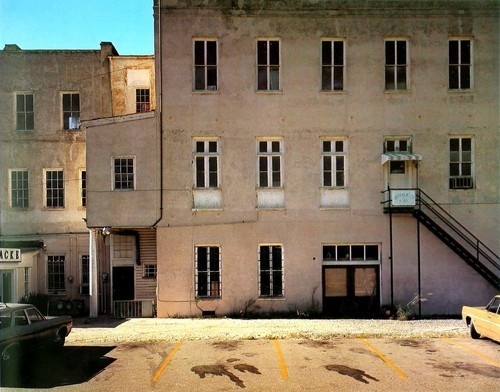

Facades: Hopper meets Lynch meets Shore
4 notes
·
View notes
Text
David Foster Wallace on the postmodern curse of irony
What passes for hip cynical transcendence of sentiment is really some kind of fear of being really human, since to be really human [...] is probably to be unavoidably sentimental and naïve and goo-prone and generally pathetic.
Irony’s useful for debunking illusions, but most of the illusion-debunking in the U.S. has now been done and redone. Once everybody knows that equality of opportunity is bunk and Mike Brady’s bunk and Just Say No is bunk, now what do we do? All we seem to want to do is keep ridiculing the stuff. Postmodern irony and cynicism’s become an end in itself, a measure of hip sophistication and literary savvy. Few artists dare to try to talk about ways of working toward redeeming what’s wrong, because they’ll look sentimental and naive to all the weary ironists. Irony’s gone from liberating to enslaving. There’s some great essay somewhere that has a line about irony being the song of the prisoner who’s come to love his cage.
David Foster Wallace
6 notes
·
View notes
Text
Jarmusch on the tyranny of plot
Life has no plot, why must films or fiction?
Jim Jarmusch
2 notes
·
View notes
Text
Lynch and Benjamin on memory
I like to remember things my own way. How I remembered them, not necessarily the way they happened.
David Lynch, Lost Highway
Memory is not an instrument for surveying the past but its theater. It is the medium of past experience, just as the earth is the medium in which dead cities lie buried. He who seeks to approach his own buried past must conduct himself like a man digging.
Walter Benjamin
4 notes
·
View notes
Text
Kaurismaki on the upper classes
Of course, the working class is not such a sexy and commercial subject, I understand from the popcorn audience. But I couldn't write dialogue for upper-class people because I wouldn't know what they say. I don't know if they talk at all. Maybe they are just shopping. And selling and buying stocks. Stocks and stockings. I find rich people boring.
7 notes
·
View notes
Text
Kaurismaki on the aestheticization of violence
I would like to explain the violence in this film. Because it makes me uncomfortable. The problem is this story had to start with violence. So I wanted to at least make it honest. Because if people want to see violence looking good, there is something wrong with their heads. So I make it look as it really is, fast and ugly. This is my rule and my explanation.
4 notes
·
View notes
Text
Calvino on picking the right discourses
The inferno of the living is not something that will be; if there is one, it is what is already here, the inferno where we live every day, that we form by being together. There are two ways to escape suffering it. The first is easy for many: accept the inferno and become such a part of it that you can no longer see it. The second is risky and demands constant vigilance and apprehension: seek and learn to recognize who and what, in the midst of inferno, are not inferno, then make them endure, give them space.
Italo Calvino
3 notes
·
View notes
Text
Bresson on contextualization
The most ordinary word, when put into place, suddenly acquires brilliance. That is the brilliance with which your images must shine.
Robert Bresson
1 note
·
View note
Text
Tarkovsky on the chain of semiosis?
We can express our feelings regarding the world around us either by poetic or by descriptive means. I prefer to express myself metaphorically. Let me stress: metaphorically, not symbolically. A symbol contains within itself a definite meaning, certain intellectual formula, while metaphor is an image. An image possessing the same distinguishing features as the world it represents. An image — as opposed to a symbol — is indefinite in meaning. One cannot speak of the infinite world by applying tools that are definite and finite. We can analyse the formula that constitutes a symbol, while metaphor is a being-within-itself, it's a monomial. It falls apart at any attempt of touching it.
Andrei Tarkovsky
48 notes
·
View notes